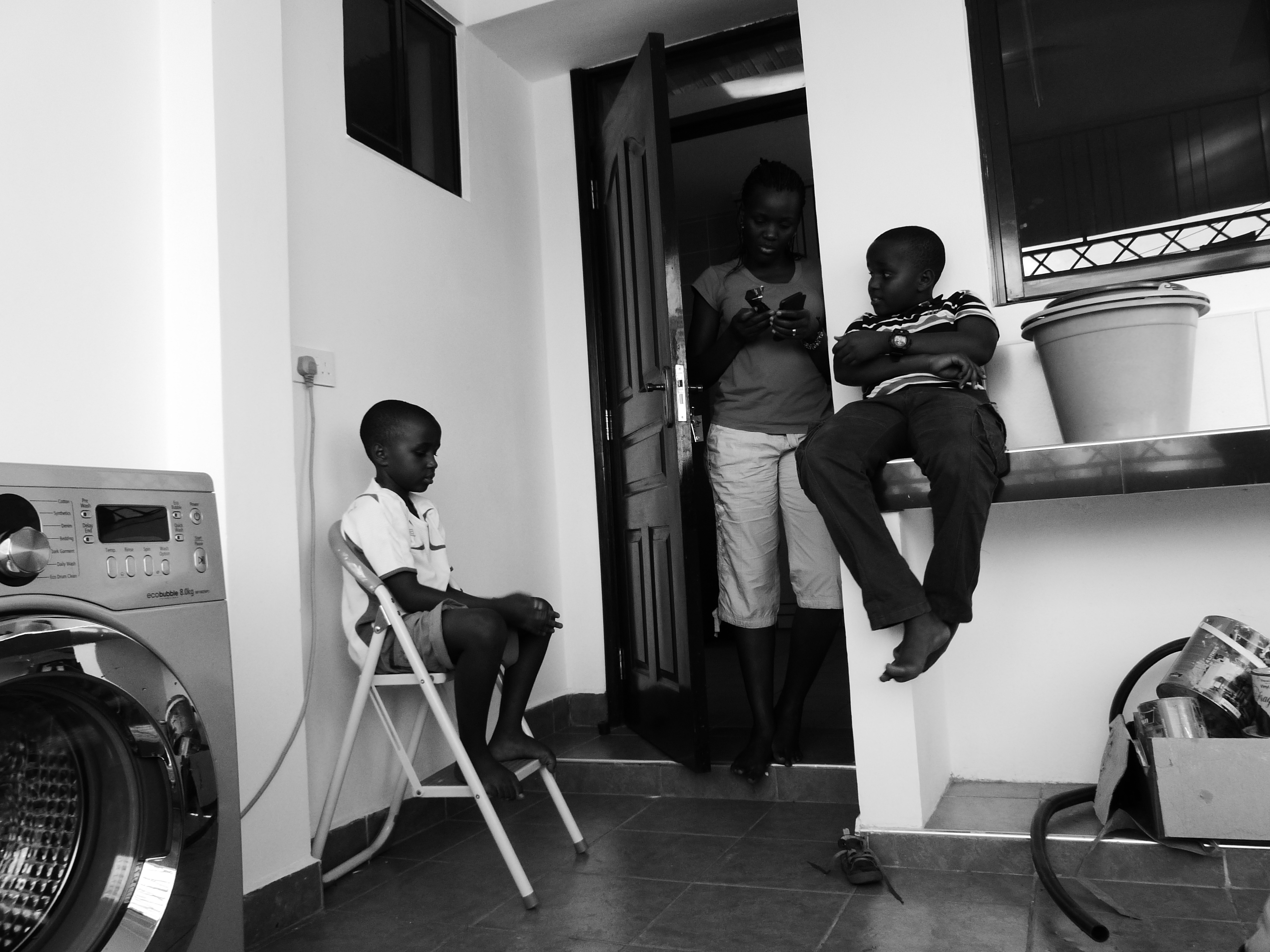|
|
| Foto: L.Kroeker |
Summary of results (2013 – 2016) and further thoughts (2017 – 2018)
During the last few years, the middle class in Africa has become a prominent topic of publications in development economics and in media in general. Economically-focused and popular media have coined numerous terms for this rising middle class: The Economist (2011) wrote “Pleased to be bourgeois - Africa's growing middle class” and called Africa “The Hopeful Continent”, which follows in the footsteps of the Asian tiger states. The African Development Bank spoke about “The Middle of the Pyramid” (African Development Bank 2011). “Africa Rising” was used as a slogan that paralleled the Indian one “India Shining”. Focusing on aspects of consumption, Deloitte 2013 (“The Rise and Rise of the African Middle Class”) addressed the upward trend of the African middle class. The most-cited study is the one by the African Development Bank (2011), which shows an enormous growth of this middle income group. According to the study, the number of people earning between 4 – 20 US$ per day per head has doubled over the last 20 years. The states with a large economic potential in particular are said to foster an increasingly affluent middle income group. All of these publications are expecting great things from this growth of the middle class in many African countries. But what exactly are these expectations? Are they justified? What are the conditions for the development of a middle class? What are the perspectives of the future of this middle class?
The sub-project focuses on the middle class(es) as originators of perspectives of the future and their contexts. There are three main outcomes of the anthropological studies of the African middle class at the University of Bayreuth:
- The discussion carried out in the social sciences mostly makes reference to older sociological works to analyze social stratification in the countries of the Global South. These works, however, can only be transferred to non-European contexts in a very limited fashion. The approaches of both Marx and Weber were devised in the late 19th century to analyze the English and German societies of that time period. The middle class in 19th-century Germany consisted of a small group, the bourgeoisie, which distanced itself from the aristocrats. As a result of its work on the middle class in Africa, the project comes to the conclusion that the historic framework of the formation of the middle class in Central Europe – which was rooted in the industrialization and the existing social and political culture – can hardly be compared to the genesis of the middle class in African countries.
The, at times, arbitrary, demarcation of social classes in African countries created artificial social constructs without any sort of social unity, identity or common interests. While social boundaries also existed, they did not manifest themselves in economic processes based on the division of labor, but instead referred to fundamentally different features, such as age groups, ethnic identity, religion or slavery. Those reasons for demarcations and social differentiation do not match the descriptions of European societies. Thus, the transfer of theoretical models for the research on African middle classes are made on the basis of assumptions about a societal structure which, we think, are inapplicable. It is, for example, not possible to assume that the middle class is taking a generally critical political stance toward the government, as the Bildungsbürgertum in Europe did. The same goes for other, similar assumptions about the middle class in Africa, which are all based on a Europe-centric understanding of the term. Basic assumptions like an interest in gender equality; a common identity; an interest in education, science and technology; an interest in consumer products and in a generally western way of life in the urban space cannot be made for the middle class in the Global South.
- The debate about the middle classes in the field of social science is, for the most part, conducted in English and with a focus on Anglophone and Lusophone African countries. The current state of research into social differentiation in the German-speaking area is, however, markedly different from that of the Anglophone discussion. This ultimately leads to a marked difference in the terms the two areas use. Whereas the latter only uses the term middle class, German sociology during the 1980s conducted a much deeper, more differentiated analysis of social structures. German researchers now prefer to apply the term Mittelschicht or rather Mittelschichten, in the plural, to mark the heterogeneity of the group (Neubert / Stoll 2018; Stoll et.al. 2016; Graf 2016; Geissler 2006). Apart from the social differentiations like social stratum, class, and the more detailed socio-structural demarcations like Milieu or Lebensstil which German sociology has developed are unknown in the Anglophone area and are thus rarely used in the current debates about the African middle class. Lebensstile and Milieus establish patterns of consumption, values and political stances as separate categories. These are often based on quantitative, statistical data, which is collected for purposes of market research and is visualized as graphs. As Dieter Neubert and Florian Stoll have shown in talks and papers, the Milieu-approach can be used to describe the urban population of Nairobi and Mombasa (Neubert 2014; Neubert & Stoll 2015; Neubert 2016; also in a comparison with urban Brazil, Stoll 2012; 2017). With this approach, the middle class can be subdivided into smaller units – the middle class consists of a number of groups with different life styles. The anthropological debate for the most part does not resort to the approaches concerning milieu or Lebensstil. It is not necessary for anthropological research to define clusters or groups – the collected data can be based on examples that are seen as representative. In a sociological approach, such as Milieus, it is possible to consider subjective as well as objective areas. In the anthropological approach, group identity is seen as emic.
- Social Anthropology has done extensive work on boundaries existing between groups and group identities. It has also done research on social and cultural dynamics with regards to gender, age, ethnic differentiations and markers of status, as well as changes of status due to initiations. Until the latter half of the 20th century, anthropologists were dealing with groups not organized in the confines of modern statehood, i.e. with an Africa beyond the colonial, capitalist imprint. Descriptions of hierarchies inside a nation state, such as those implied by the concepts of class or Schicht, are rarely used. Descriptions that solely focus on income differences are non-existent. This is a different approach than is used in sociology, since research into social classes and Schichten started at the same time as the founding of nation states and the population of a nation state was seen as a unit. This fundamental difference in the two fields is quite probably the main reason for the inexistence of a purely anthropological debate about economic Schichten and classes in non-European areas for a long time. Other Klassen that can structure a society, such as age groups, have been and continue to be central topics of anthropology.
In practice, the University of Bayreuth’s anthropological research on African middle classes focuses on the heterogeneity of households, social security and career goals.
Sociological research at the Bayreuth Academy of Advanced African Studies focuses on the milieus of urban middle classes and Interactive Ritual Chains.
Further questions and discussions in the Academy’s second phase
The empirical data collected so far inspires us to ask further questions, which we haven’t been able to discuss in more detail yet. Possible questions to consider are, among others: Whether or not a rural middle class exists and if it is possible to talk about a middle class with regards to societal fringe groups such as agro-pastoralists. Do statements made about the middle classes in the Global North also hold true in the specific local contexts of the Global South and can they be seen as part of a definition of the term middle class? This can, for example, concern the idea of the middle class as a driving power for democratization; or the supposition that the middle class yields mostly from the ranks of public officials and company employees or that a rise up the social ranks is linked to a higher consumption of goods and thus an increased energy consumption. Furthermore, aspects like social downward mobility, changing one’s Schicht through marriage or age as well as the heterogeneity of households are under-represented in the current debate.




